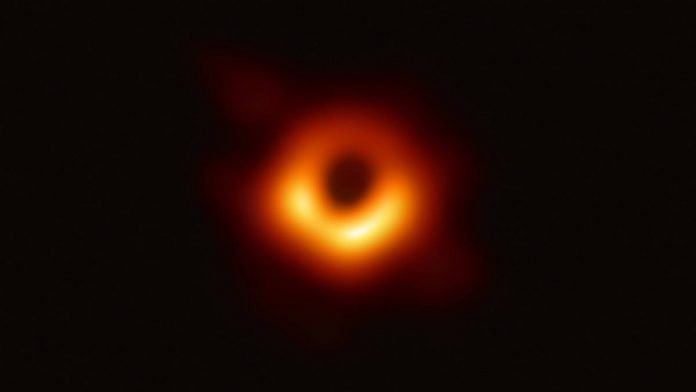New Delhi: Scientists using the Atacama Large Millimeter/submillimeter Array (ALMA) — a telescope that observes electromagnetic radiation at millimeter and submillimeter wavelengths — were studying a galaxy known as the SPT0311-58, when they found water and carbon monoxide molecules in the galaxy located nearly 12.88 billion light years from the Earth.
SPT0311-58 is actually made up of two galaxies, and was first seen by ALMA scientists in 2017. Scientists believe that the two galaxies may be merging, and that their rapid star formation is not only using up their gas, or star-forming fuel, but that it may eventually evolve the pair into massive elliptical galaxies. Read more here.
Glass with extraterrestrial touch found in Atacama
Around 12,000 years ago, a vast stretch of sand in the Atacama Desert in Chile was scorched with heat so intense that it turned into slabs of silicate glass.
Now, a team from Brown University in the US has found that samples of the desert glass contain tiny fragments with minerals often found in rocks of extraterrestrial origin.
Those minerals closely match the composition of material returned to Earth from a comet called Wild 2 in 2004.
The team thus concluded that the mineral assemblages found in Atacama are likely the remains of an extraterrestrial object.
This is the first evidence of glass on Earth created by thermal radiation and winds from a fireball exploding just above the surface.
The glass slabs are concentrated in patches across the Atacama Desert. Fields of dark green or black glass occur within a corridor stretching about 75 kilometers. There’s no evidence to show that the glass slabs could have been created by volcanic activity. Read more here.
Covid infection widespread among deer in US
Scientists who studied hundreds of white-tailed deer infected with the coronavirus in the US have found that the animals got infected from humans, and then rapidly spread the disease among one another.
According to a new study this week, up to 80 per cent of deer sampled from April 2020 to January 2021 in the state of Iowa were infected.
Although the team is yet to identify how the deer contracted the virus from humans, the findings pose worrying implications for the pandemic.
While there is no evidence yet to suggest that deer may have passed the virus back to humans, widespread infection among other species would make eradicating the virus more difficult, because this creates a possibility of other species becoming reservoirs for the virus. This would mean that unknown to us, the coronavirus may continue to mutate in these animals, and eventually spill back to humans.
The study is yet to be peer-reviewed, but the researchers and wildlife officials in Iowa are alerting deer hunters and others who handle deer to take precautions to avoid transmission. Read more here.
Also read: Why keto diet does not restrict tumour growth & an ancient predator is now a timid herbivore
Black holes gain mass as the universe expands
Scientists have proposed a new theory based on data from gravitational waves which suggests that as the universe expands, blackholes gain mass.
In 2015, the LIGO facility — gravitational wave detector —made the first-ever detection of gravitational waves — which are ripples in the fabric of spacetime — a discovery that opened up a new avenue for research.
The most common explanation for the large masses of blacholes is that they grow by swallowing up matter, including dust, gas, stars, or other black holes. However, the researchers on the new study have now proposed that the masses of black holes could grow as the universe expands, an effect that the team is calling cosmological coupling.
The team simulated millions of pairs of stars through their birth, life and death to form black holes, but they also took into account the expanding universe. They found that black hole pairs grew more massive over time.
The predictions agree with data from the LIGO-Virgo collaboration, which collects gravitational wave data. Read more here.
Less than 2 per cent of Great Barrier Reef escaped bleaching
Less than two per cent of the coral reefs in Australia’s iconic Great Barrier Reef have escaped bleaching since 1998, a finding that dispels the myth that the corals could escape global heating long enough for it to recover.
The world’s largest coral reef system has suffered five mass bleaching events since 1998. Coral bleaching is caused by rising ocean temperatures driven by the burning of fossil fuel.
Researchers from James Cook University found that only 1.7 per cent of individual reefs had avoided bleaching. Almost all of the places that escaped damage were in an area known as Swain reefs in the southern section of the world heritage listed marine park.
Some reef experts hope cooler areas will act as refuges from bleaching, but according to this latest research, such areas too had experienced severe or moderate bleaching at least once.
When corals sit in unusually warm water for too long, they separate from the algae that give them most of their food and their colour. In extreme cases this bleaching can kill the coral. Read more here.
(Edited by Poulomi Banerjee)
Also read: DNA from lock of hair confirms identity of Native American leader Sitting Bull’s great-grandson



